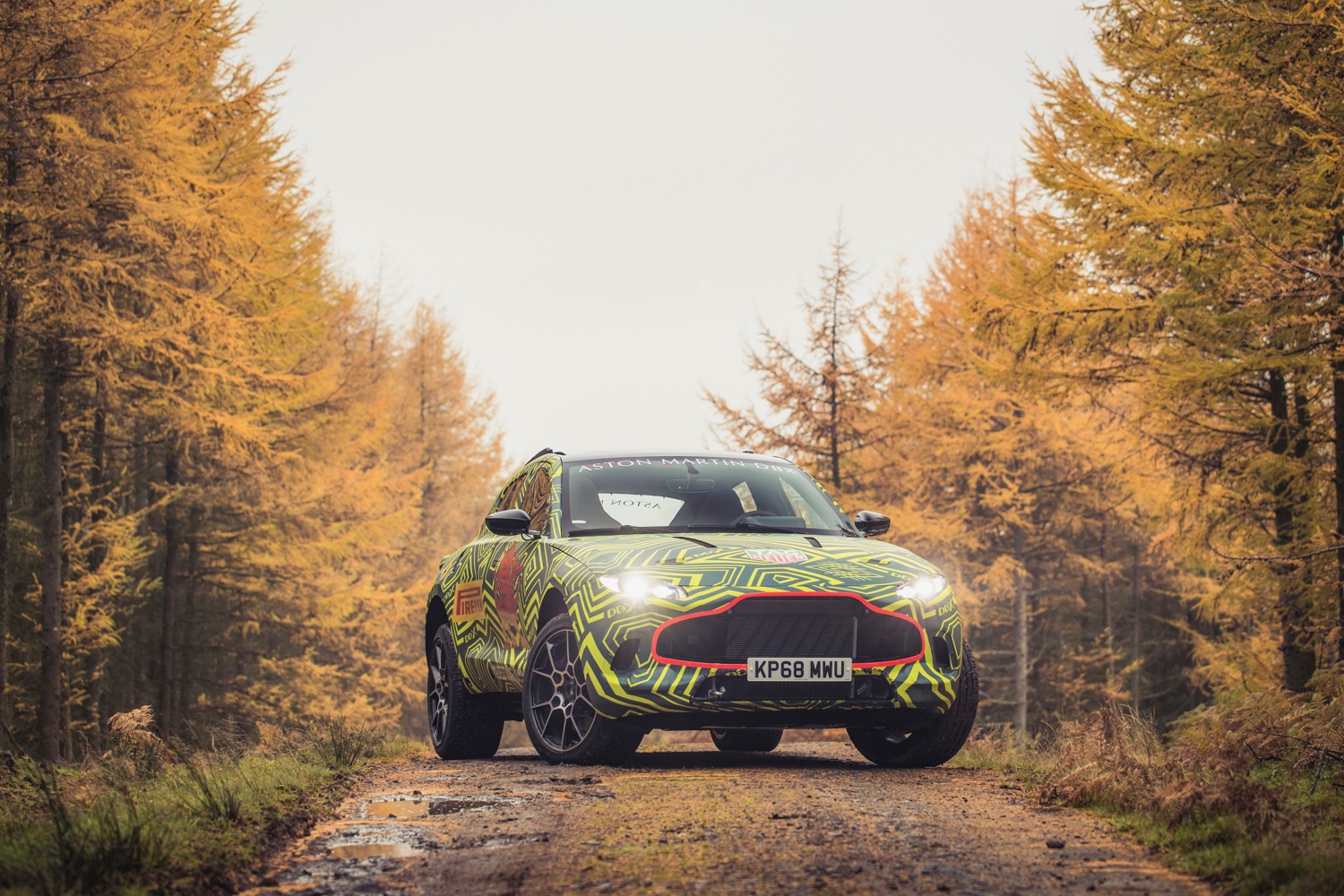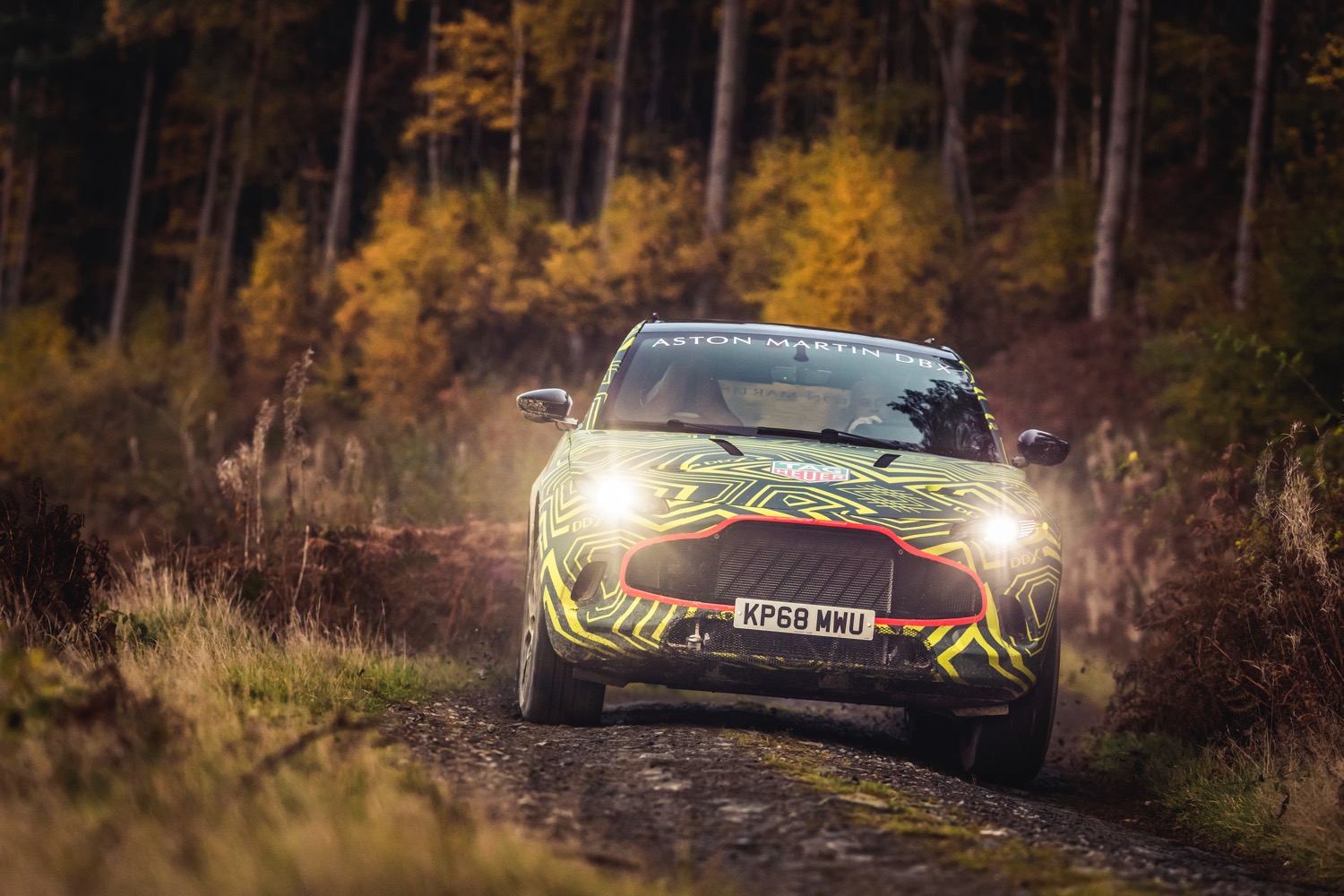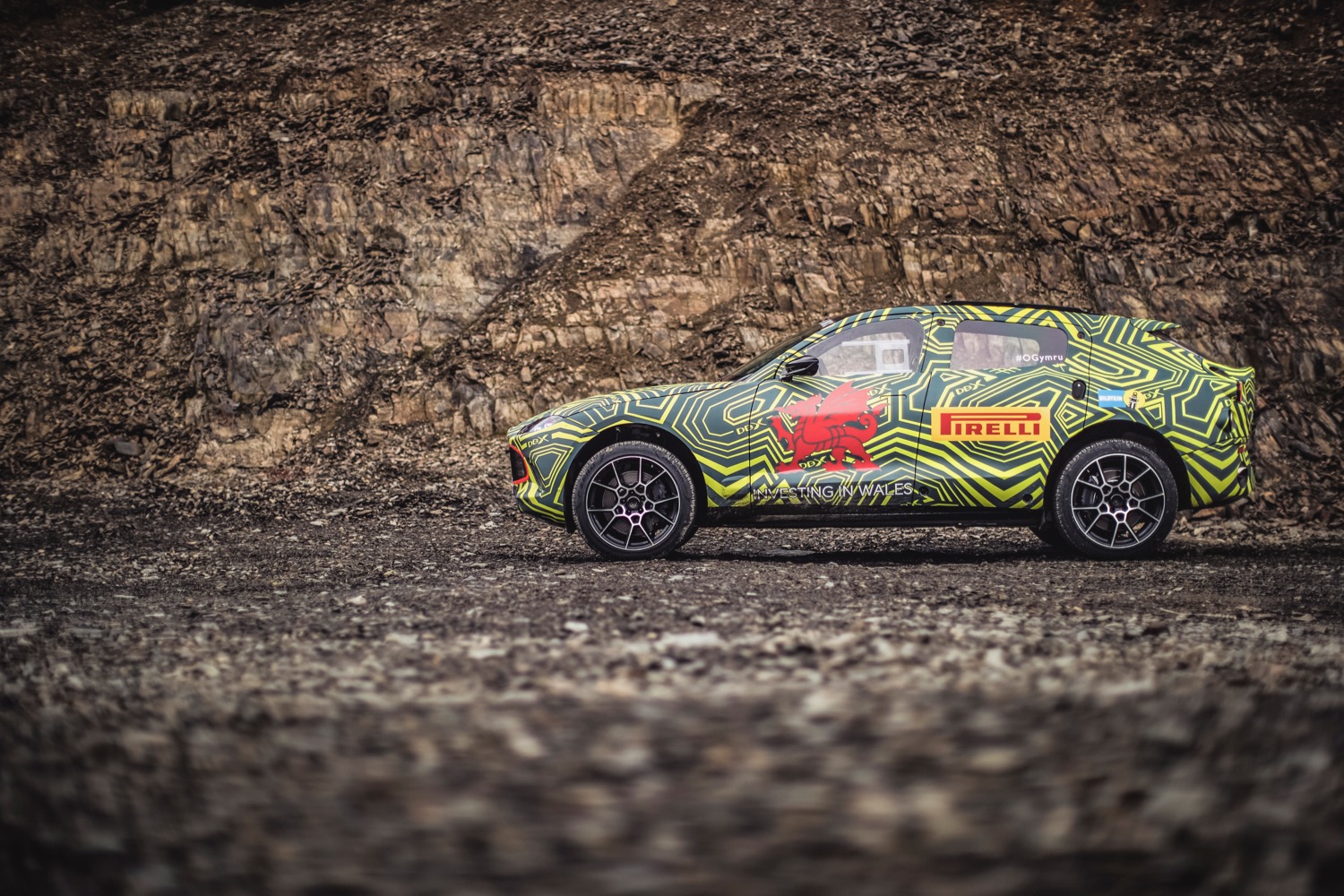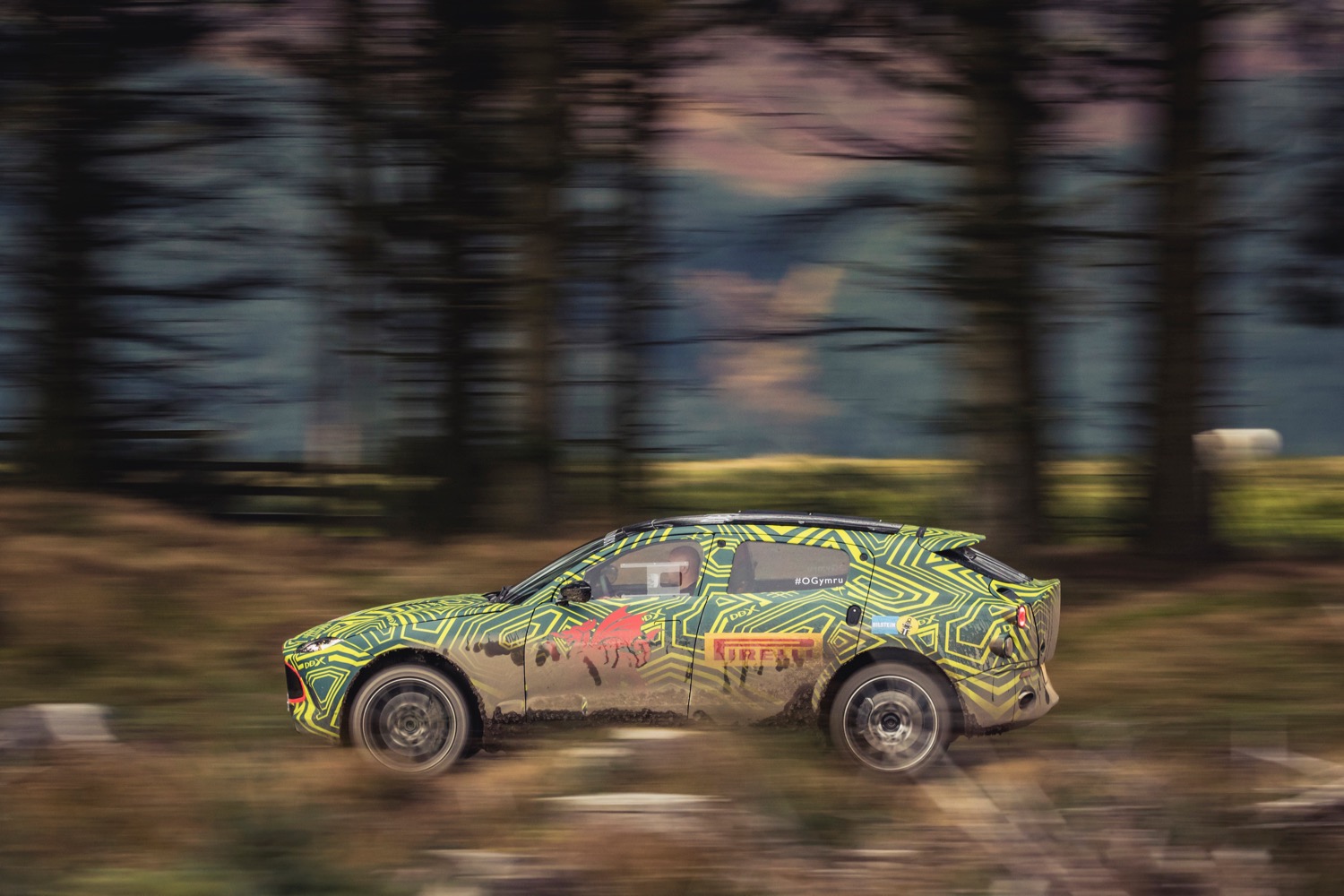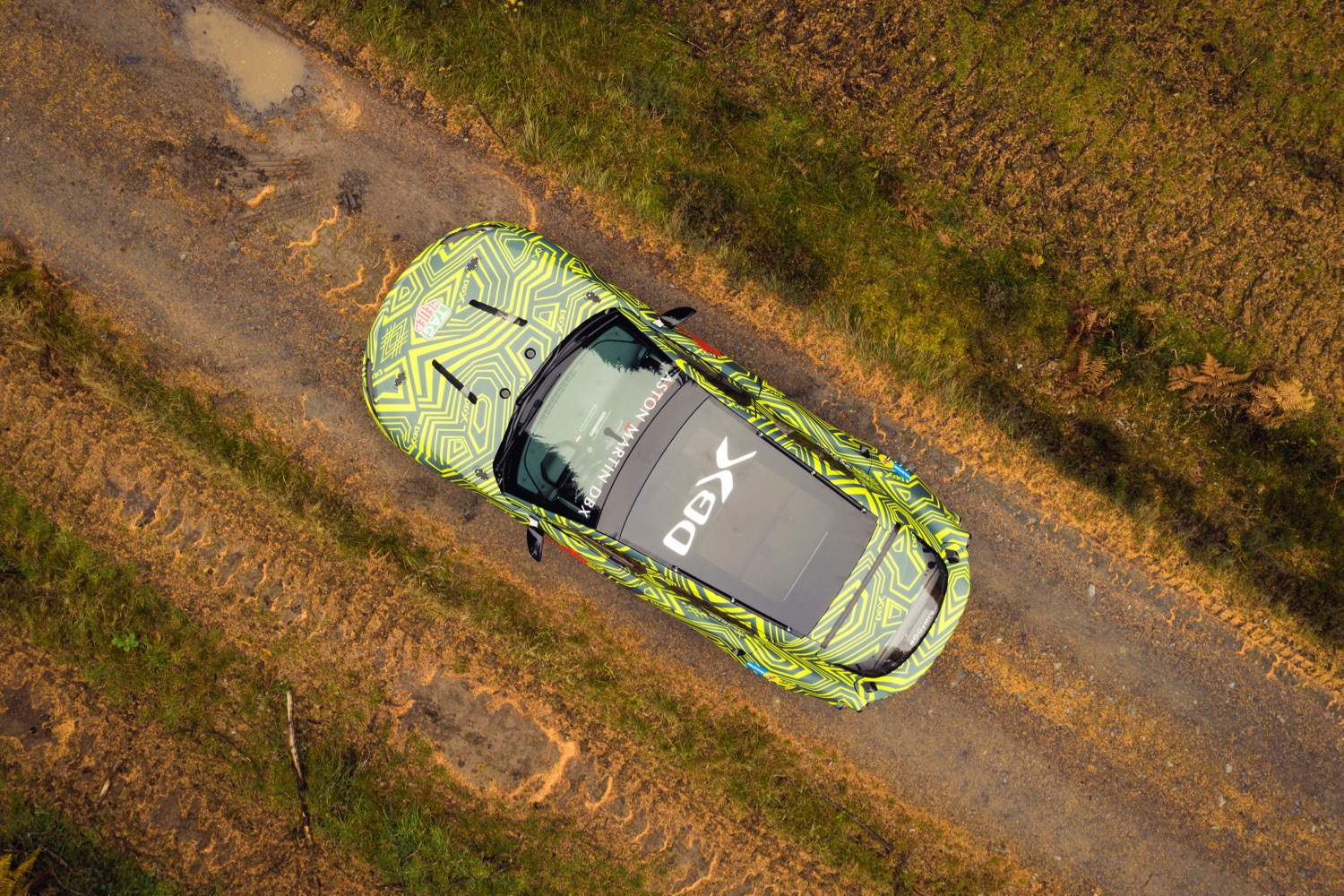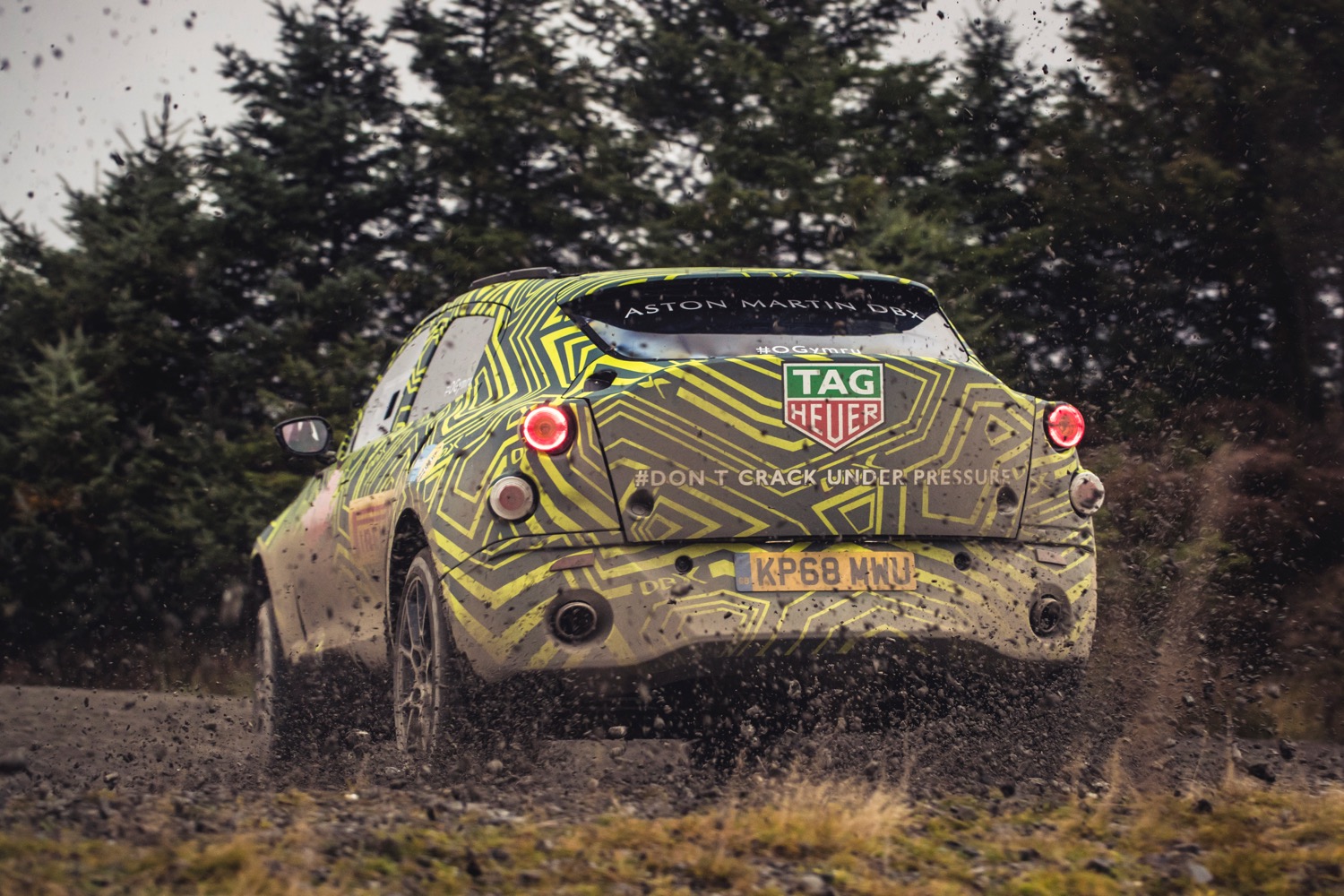The idea of an Aston Martin SUV may seem strange, given Aston’s history. But, then again, so did the thought of Porsche, Bentley, Alfa Romeo, Rolls-Royce, and Lamborghini SUVs. Yet now those brands all have truck-like vehicles of their own, so why shouldn’t Aston? Thanks to some photos of a camouflaged prototype released by the British automaker itself, we now have a glimpse of what Aston’s first SUV will look like when it arrives in 2019.
In addition to releasing the photos, Aston confirmed that the SUV will be named DBX. The name was first used on a 2015 concept car that was the first indication Aston was serious about building an SUV. The prototype does bear a resemblance to the original DBX concept, but we won’t know what it really looks like until the camouflage is stripped away.
Automakers used to try to hide prototypes during testing, but public relations departments have realized that photos of said prototypes can be effective promotional tools. As is becoming typical with these teases, Aston mentioned a tough testing regime including stints in the Arctic and Middle Eastern deserts. Aston said it has already run the DBX on a Welsh rally stage, and plans to hit German autobahns and the Nürburgring racetrack as well.
The DBX will have performance worthy of the Aston Martin name, the automaker claims, plus the towing and “multi-terrain” capabilities of a true SUV. But Aston isn’t revealing any other details yet. It is understood that the production DBX will use an internal-combustion powertrain, rather than the all-electric powertrain of the DBX concept, but no concrete specifications have been released.
Aston will build the DBX at its new factory in St. Athan, Wales. The finished product will be unveiled toward the end of 2019. Located on a former British Royal Air Force base, the factory will also be Aston’s hub for electric cars. Production of electric cars starts next year with an all-electric version of the Rapide four-door called the Rapide E. That will be followed by more all-electric models under Aston’s revived Lagonda sub-brand. Between an SUV and a brace of electric cars, Aston is straying far from its traditional sports cars. Will the gamble pay off?


